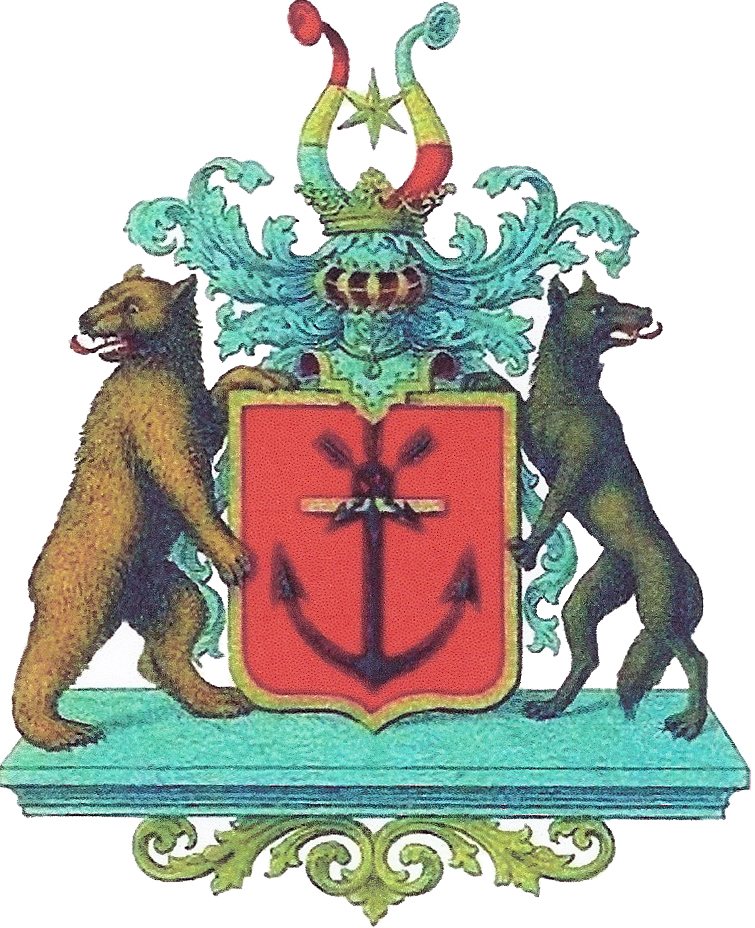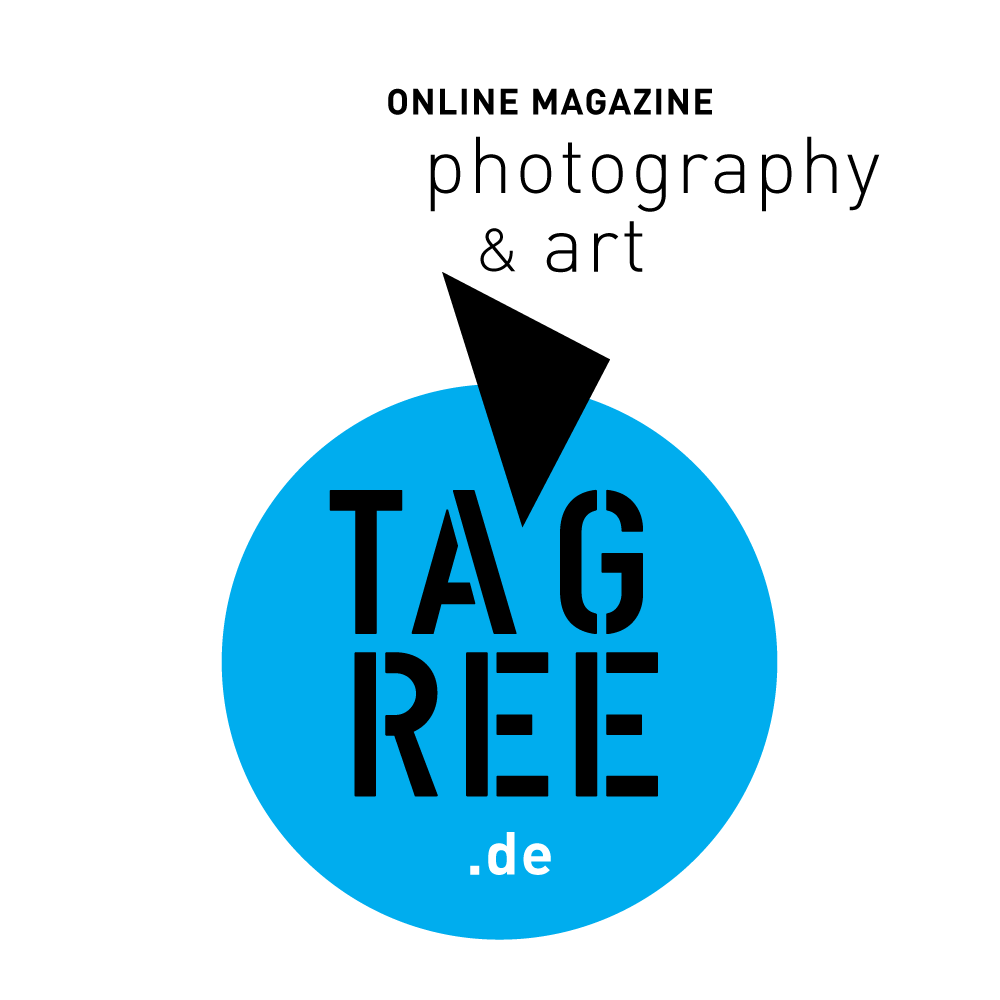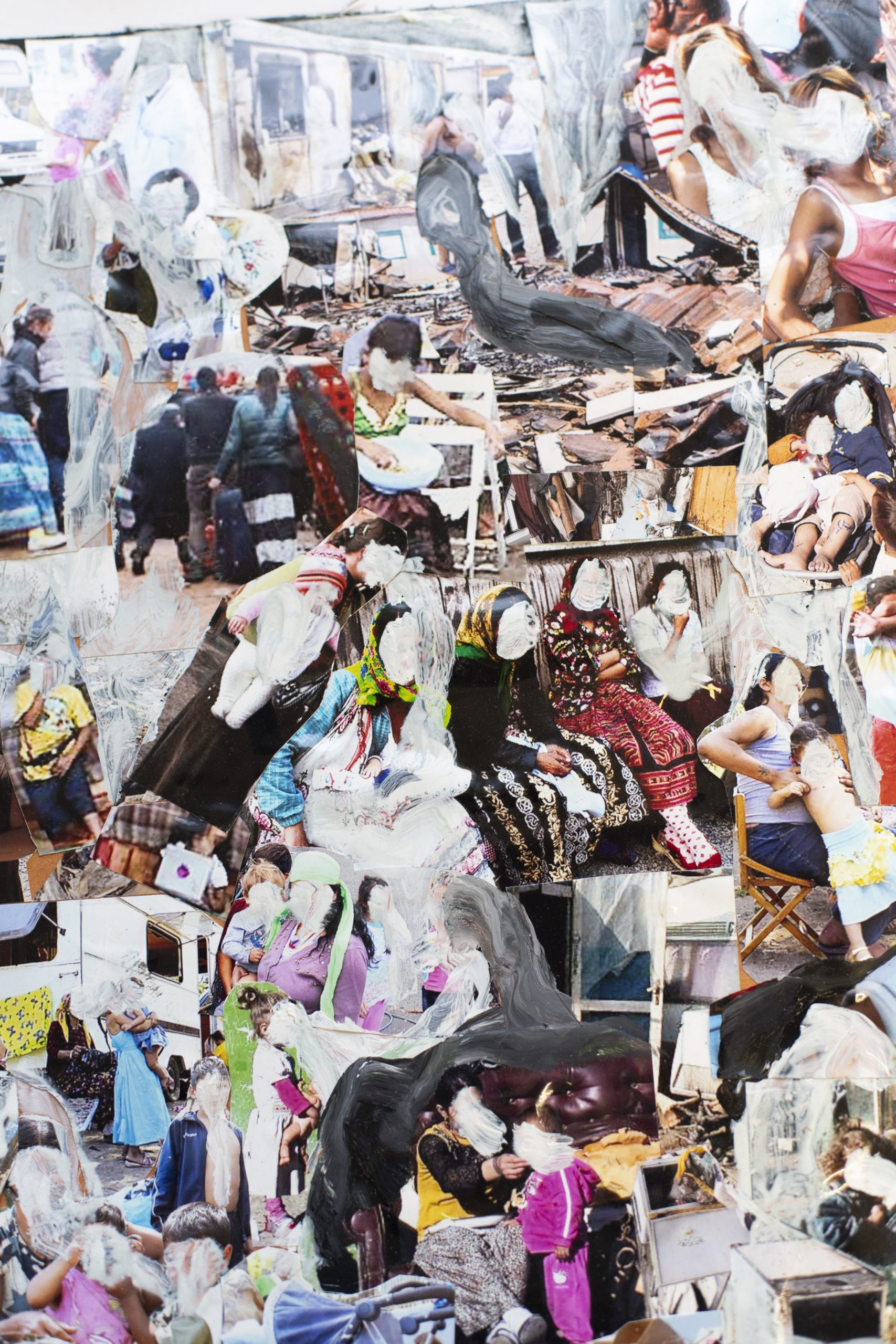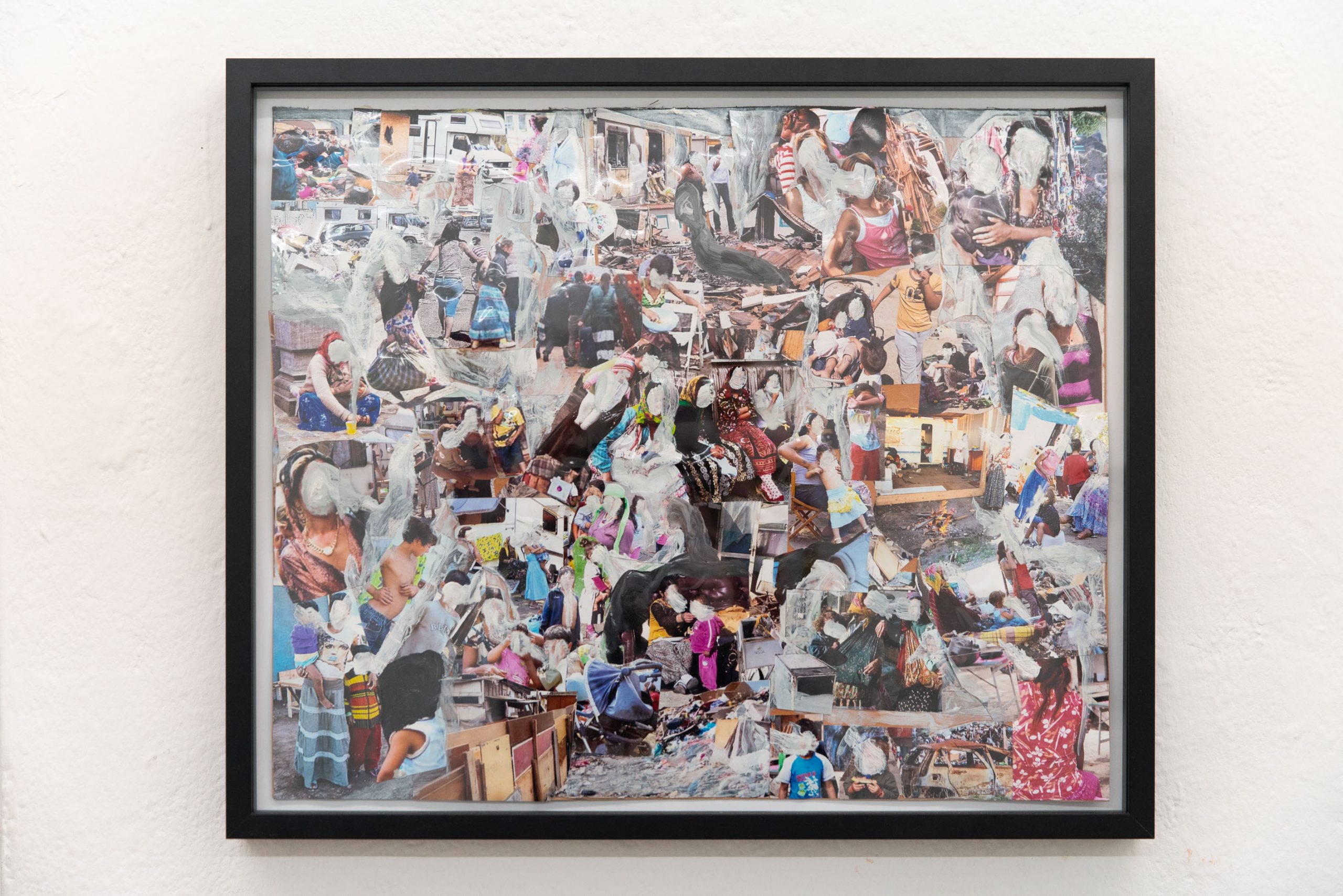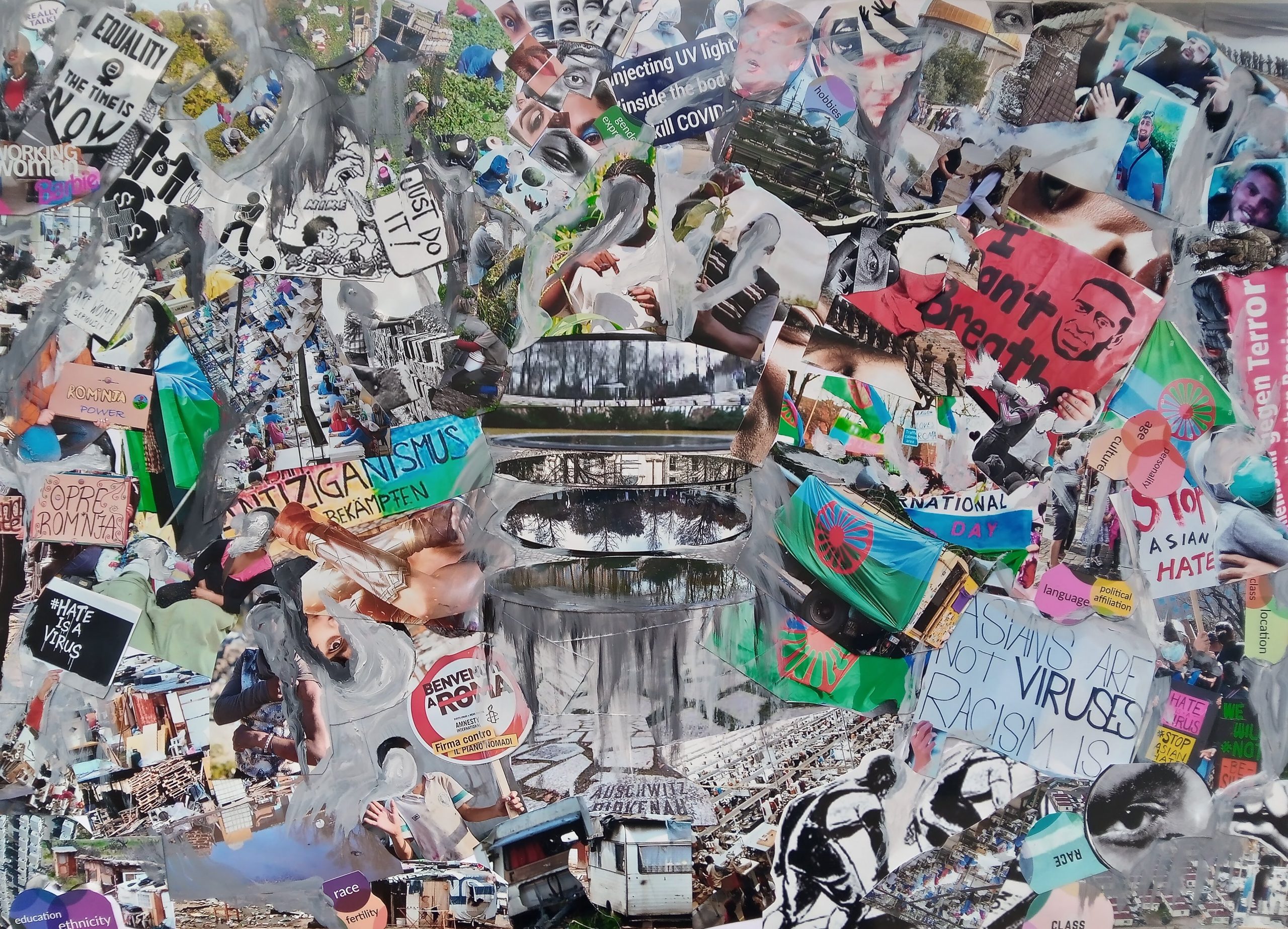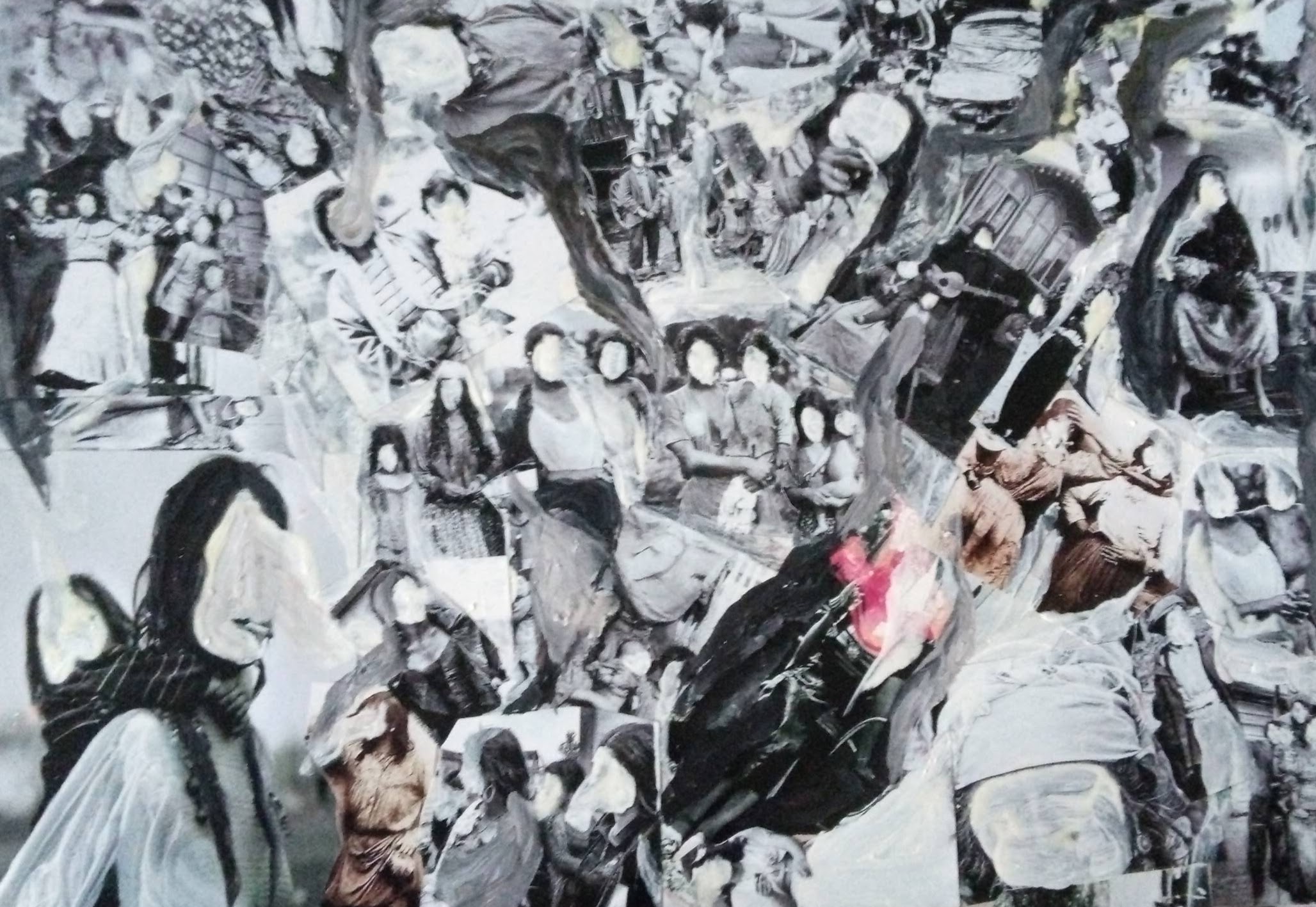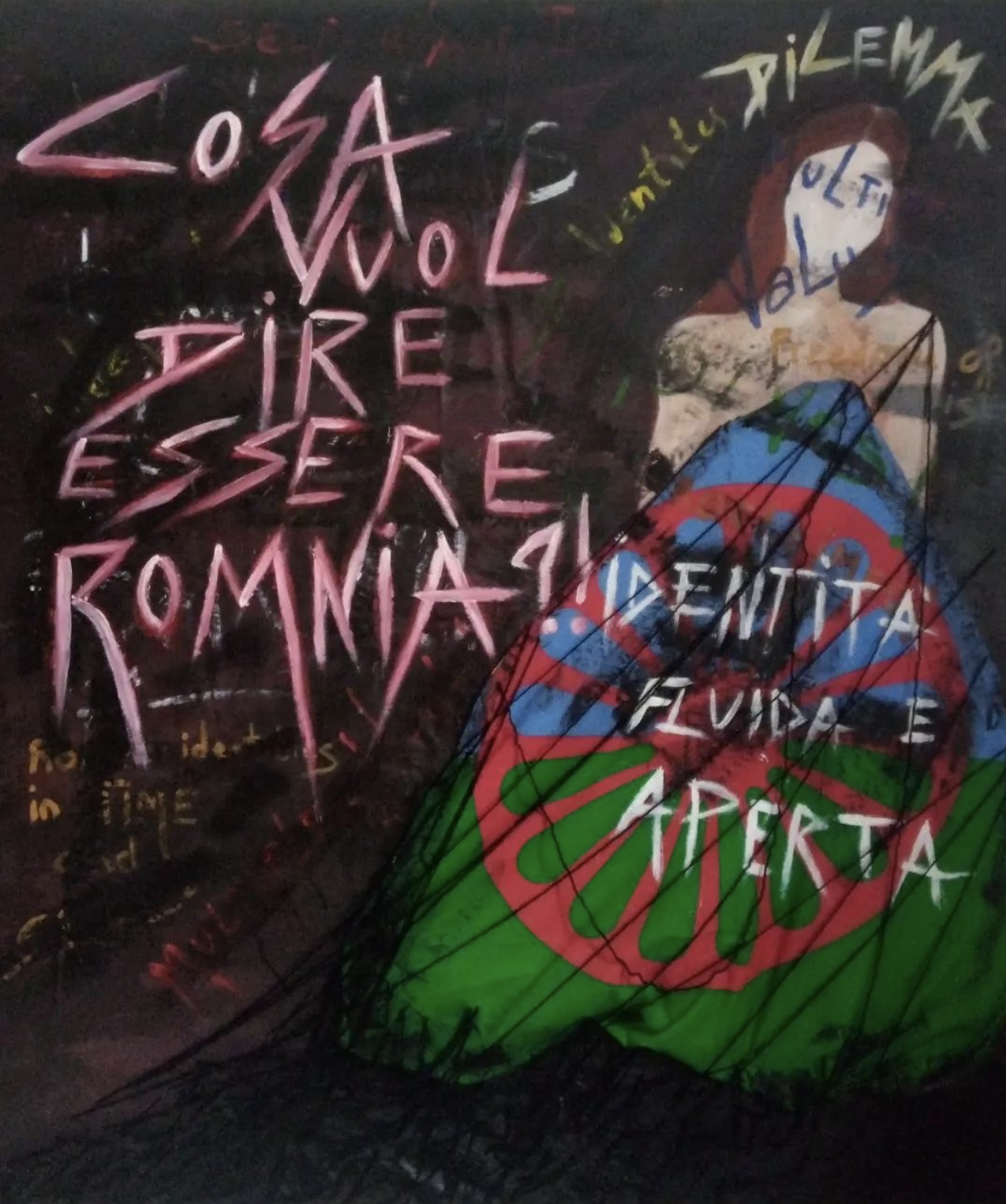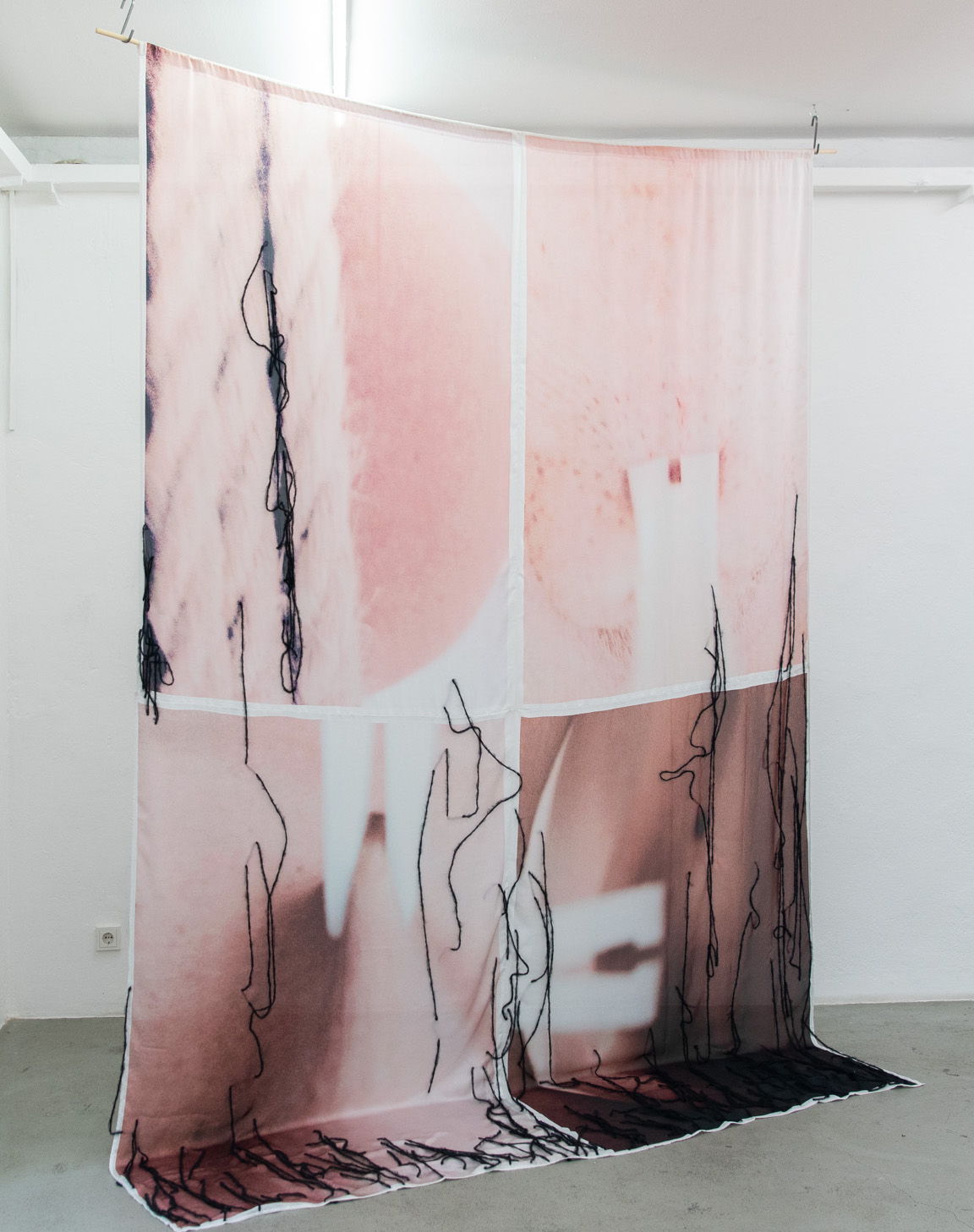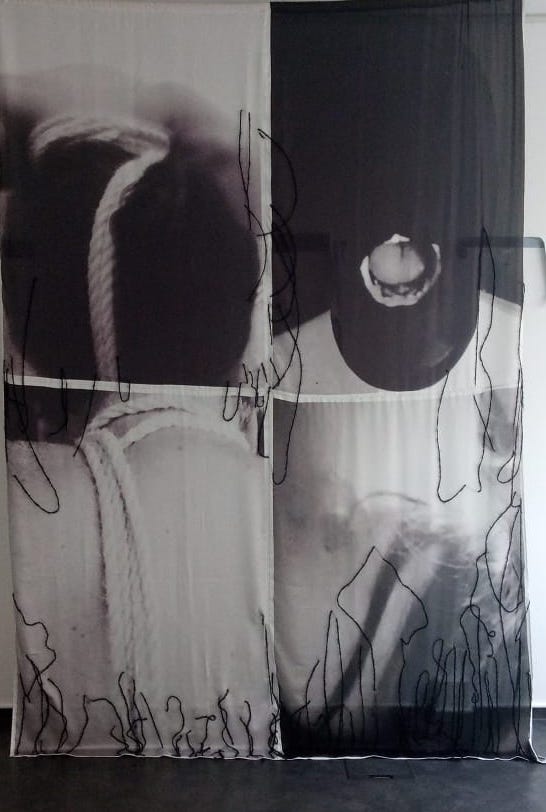-
– Roma Camps in Italy – the architectural expression of state racism
Collage, photos, oil paint, 60x42cm, 2022
-
– Social Atmosphere
Collage, painting 70x50cm, 2022
-
– Romnjadigitalised
Collage, oil painting, 47x57cm, 2022 -
– Cosa vuol dire essere Romnia?!
oil on canvas, wool, 120x140cm, 2022
-
– Sullo spigolo dei silenzi
series of 60 pieces – photos on silk ,120x140cm, 2017 on going
If you want to see what kind of discursive ideologies are created around Romani women, you have to look at the language that surrounds them.
Discrimination needs to be explored with the help of an intersectional approach due to the fact that many women have to challenge heteronormativity, ageism and other forms of discrimination that make their positioning within patriarchal and ethnicized societies more complex.
It is widely accepted among theorists that race, ethnicity, as well as gender, are socially constructed categories, imagined and invented by some historical poets, which aim to justify the hegemony of the powerful. This means that it is necessary to question the existence of the essences that make us “Romani women”.
Identity is socially constructed and contested, which is why it is of paramount importance that Roma women, affected by inequality and in many cases by poverty, exclusion and discrimination, are finally seen with their true biographies and identities! That is to say, to have it recognised that Roma women are nowadays able to mobilise around different issues, that they are able to educate themselves and others and to occupy certain positions, representing a significant step forward.
It is within the media that identities are produced through “becoming and being”. The identities are constantly in motion, responding to the histories, cultures and power structures that surround them. And it is through these “dominant regimes of representation” that groups can come to see themselves as Other.
Images play a crucial role in defining and controlling the political and social power to which both individuals and marginalised groups have access. The deeply ideological nature of images determines not only what others think of us, but also what we think of ourselves.
The stereotype ‘gypsy woman’ for example, which we often find in photos, paintings or on the internet, always contains the notion of a ‘tribe’. As a consequence, the term “gypsy woman” is coupled with the notion of “family” and “fertility” imposed by the motif “mother with children” so she is always represented with many children/children surrounding her.
There is a lack of images of independent, self-confident and successful Roma women! Having Romnias telling our culture as journalists, artists and at the same time finally making their voices heard as activists to claim our rights, is a new and important role to encourage those women who still experience discrimination and especially for the future of young people, who should absolutely not experience the feeling of difference, but rather feel part of an ancient and rich culture that is Romans.
My work intends to address the urgency of exploring the importance, possible interpretations and contexts of how in art, photography and film the figure of Roma women is represented and how identity, political identities and the visibility of women’s bodies are interrelated. Through multimedia works, the project aims to raise awareness and at the same time empower young Roma girls to an act of inter-scalar approach to collective self- empowerment, dealing with issues such as those of identity, race, gender, sexuality, and the continuing violence and exclusion against those perceived as “other” in society.
BIOGRAPHY
Luna De Rosa, is an Italian activist and multimedia artist from the Roma diaspora who works and lives between Berlin and Milan.
The body is the starting point of her artistic work: through interventions in the public sphere she expresses the relationship that binds the body to the social context that essentially governs and defines it. In recent years, her artistic work has focused on the vulnerability of ethnic minorities, particularly the Roma, who are strongly affected by exclusion and racism. Through the use of different media, from performance to painting and installation, De Rosa addresses the urgency of challenging misunderstandings, stereotypes and representing the multiple identities of Roma cultural and psychological heritage, focusing especially on the issues of Roma identity and femininity, creating dense images that almost metaphorically follow the friction and conflicting realities of ideas related to being an artist, Roma and woman searching for a way to exist in the middle, to be multiple, to remain irreducible.
In 2022 she was selected for the artist residency at Villa Romana, Florence.
